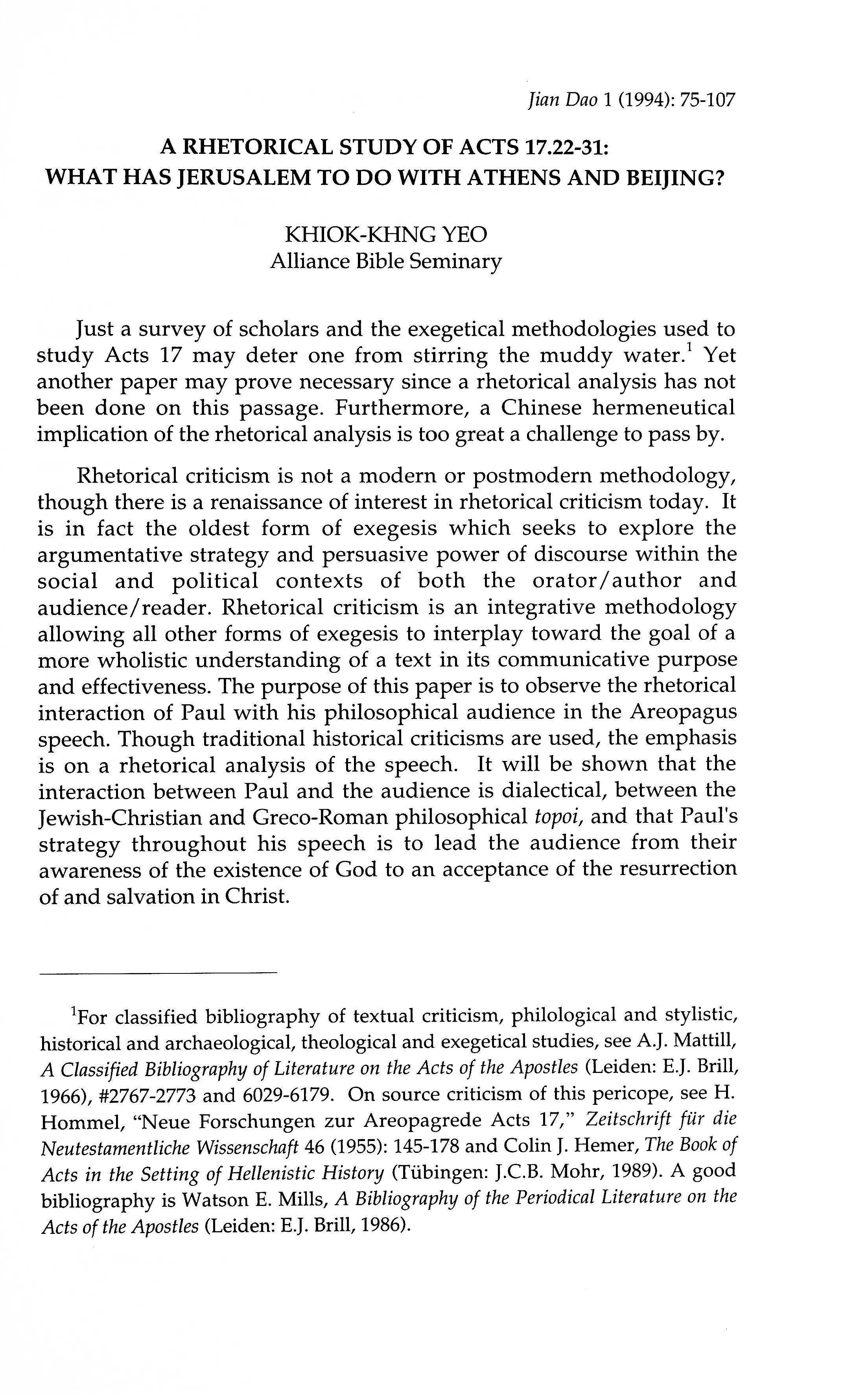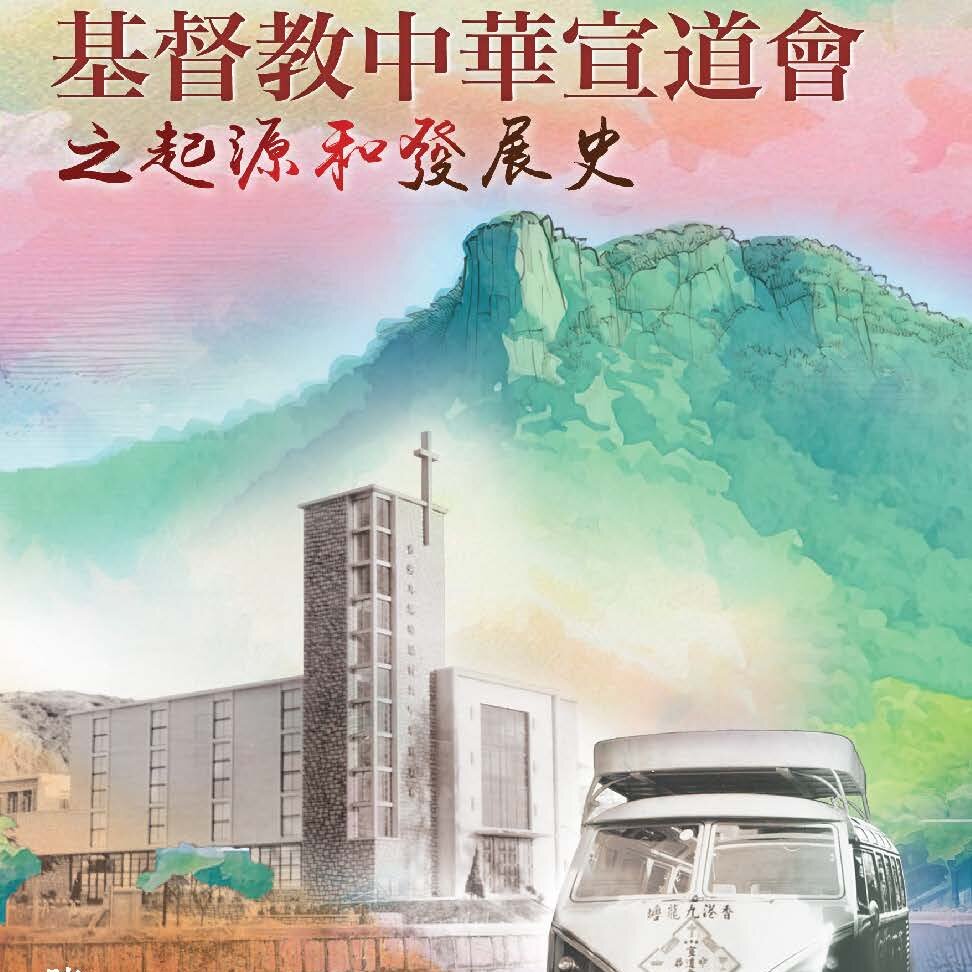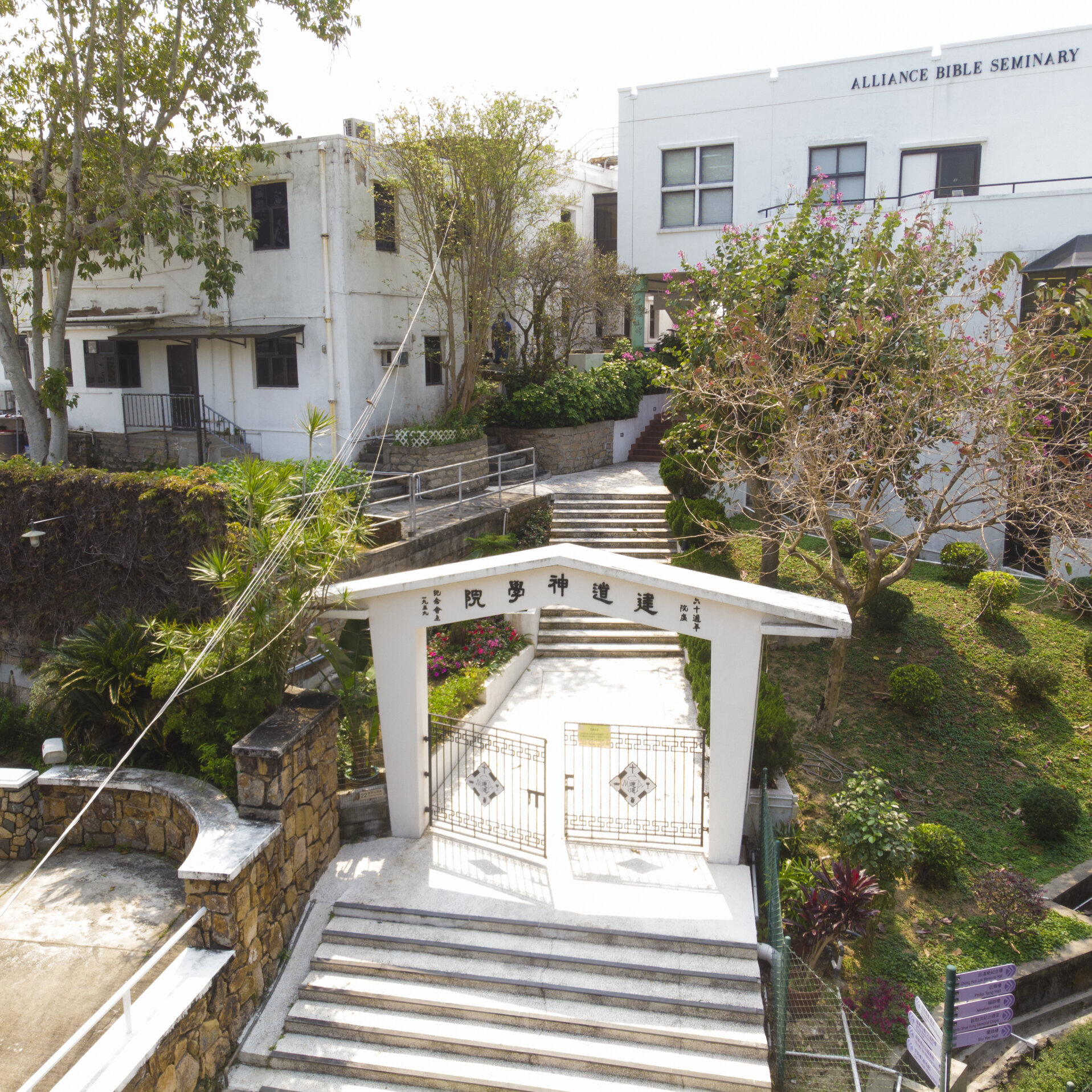A Rhetorical Study Of ACTS 17:22-31: What Has Jerusalem To Do With Athens and Beijing? (使徒行傳十七章22至31節之修辭學──耶路撒冷、雅典、北京) / 楊克勤
撮要
作者認爲,作爲一種綜合性方法,修辭鑑別學可以綜合其他的釋經形式來運用, 使我們更能對一段經文所要傳達的信息及效用有全面的了解。本文中作者特別注意保羅在亞略巴古的講道裡的措辭,並指出這顯示了一種猶太籍基督徒與希羅哲學資料(topoi)的辯證性的互動。保羅整篇講道的策略是讓聽衆察覺上帝存在,從而接受基督的復活與拯救。保羅演辭大抵上是以上帝爲中心而非以基督爲中心的,只在結尾才提到基督的事蹟;再者,其所舉例證也並非來自聖經,而是來自聽衆已有的看法。作 者在研究保羅將耶路冷與雅典扯上關係的修辭做法後,再參照現代的修辭學硏究(如 Bakhtin,Burke及:Perelman)後,更進一步,嘗試將使徒行傳十七章的信息,通過相同的修辭方法,傳遞給受道敎影響的華人聽衆。
ABSTRACT
Using rhetorical criticism as an integrative methodology that allows other forms of exegesis to interplay toward the goal of a more wholistic understanding of a text in its communicative purpose and effectiveness, the paper observes the rhetorical interaction of Paul with the audience in the Areopagus speech. The interaction is dialectical between the Jewish-Christian and Greco-Roman philosophical topoi. Paul’s strategy throughout his speech is to lead the philosophical audience from their awareness of the existence of God to an acceptance of the resurrection of and salvation in Christ. The bulk of Paul’s speech in the pericope is not Christocentric but a theocentric one that ends with the Christ event, and the proofs are taken not so much from Scripture as from the audience’s sources. After the relationship between Jerusalem and Athens has been established, the author extends the classical rhetorical approach to modern rhetorical insights (such as that of Burke, Perelman and Bakhtin), so as to relive the message of Acts 17 for a Chinese Taoist audience.
原載於《建道學刊》1期(1994年1月),頁75-107。
Latest Articles
新手牧者研究計劃(三):新手牧者的身心靈狀態 / 盧慧儀
2025 年 11 月 19 日
個體與關係:滕近輝思想中「深化」的靈性觀 / 倪步曉
2025 年 11 月 18 日
香港九龍塘基督教中華宣道會之起源和發展史/陳智衡
2025 年 10 月 20 日
Highlights
[電子書]困境與抉擇:「建道研究中心30週年誌慶」跨學科研討會論文集/廖炳堂、倪步曉主編
2025 年 1 月 2 日
從梧州到長洲:建道神學院125年的挑戰與恩典 / 陳智衡
2023 年 10 月 1 日
微小教會的見證/高銘謙
2023 年 6 月 1 日







